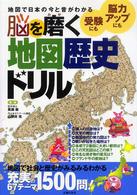Description
This book studies the three concepts of translation, education and innovation from a Nordic and international perspective on Japanese and Korean societies. It presents findings from pioneering research into cultural translation, Japanese and Korean linguistics, urban development, traditional arts, and related fields. Across recent decades, Northern European scholars have shown increasing interest in East Asia. Even though they are situated on opposite sides of the Eurasia landmass, the Nordic nations have a great deal in common with Japan and Korea, including vibrant cultural traditions, strong educational systems, and productive social democratic economies. Taking a cross-cultural and interdisciplinary approach, and in addition to the examination of the three key concepts, the book explores several additional intersecting themes, including sustainability, nature, humour, aesthetics, cultural survival and social change, discourse and representation.
This book offers a collectionof original interdisciplinary research from the 25th anniversary conference of the Nordic Association for Japanese and Korean Studies (2013). Its 21 chapters are divided into five parts according to interdisciplinary themes: Translational Issues in Literature, Analyses of Korean and Japanese Languages, Language Education, Innovation and New Perspectives on Culture, and The Arts in Innovative Societies.
Table of Contents
Part 1. Introduction and Keynote Speeches.- Chapter 1. Translation, Education, and Innovation: Editorial Introduction; David G.Hebert.- Chapter 2. From Shizen to Nature: A Process of Cultural Translation; Nanyan Guo.- Chapter 3. Life and Death of East Asian Intangible Cultural Heritage; Keith Howard.- Part 2. Translational Issues in Literature.- Chapter 4. Translating Scientific Discourse in Ariyoshi Sawako’s Fukugo Osen; Barbara Hartley.- Chapter 5. Foreigner Talk or Foreignness: The Connection Between Foreigner Talk and the Language of Westerners in Japanese Fiction; Erik Oskarsson.- Chapter 6. Emotional Discourse Analysis: An Attempt at Contrastive Analysis of Japanese Literary Translations; Alexandra Holoborodko.- Part 3. Analyses of Korean and Japanese Languages.- Chapter 7. Definiteness in Korean: A Contrastive Study between Korean and Italian; Imsuk Jung.- Chapter 8. Unmarked Plurality and Specificity in Korean and Japanese Plural Nouns: A Preliminary Study; Kiri Lee, Young-meeYu Cho, and Min-Young Park.- Chapter 9. A Creative and Innovative Approach to Korean Communicative Language: Morphonological Features and Word-Formation Processes; Vladislava Mazana.- Chapter 10. “My Funny Talk” Corpus and Speaking Style Variation in Spoken Japanese; Toshiyuki Sadanobu.- Chapter 11. Kansai Style Conversation and its Role in Contemporary Japan; Goran Vaage.- Chapter 12. The Interdisciplinary Study of Law and Language: Forensic Linguistics in Japan; Mami Hiraike Okawara.- Chapter 13. Linguistic Studies of Interpreters’ Renditions and their Possible Contribution to the Quality Control of Community Interpreting: A Data-Based Study on Court Interpreting in Lay Judge Trials in Japan; Makiko Mizuno.- Part 4. Language Education.- Chapter 14. On the Teaching of Japanese Epistemic and Evidential Markers: Theoretical Considerations and Practical Applications; Lars Larm.- Chapter 15. Analysis of Kanji Reading and Writing Errors of Swedish Learners of Japanese in Comparison with Proficiency-Matched Japanese School Children; Fusae Ivarsson.- Part 5. Innovation and New Perspectives on Culture.- Chapter 16. “Green” and “Smart” Cities Diffusion: Case of Songdo IBD; Alexandra Licha.- Chapter 17. Japanese Culture: Seeing the World through the Indigenes’ Eyes; Sachiko Shin Halley.- Part 6. The Arts in Innovative Societies.- Chapter 18. Bad Father and Good Mother: Changing Masculinity in the Post-Traumatic Japan; Shuk-ting Kinnia Yau.- Chapter 19. Performance, Process and Technique in the Dokyoku Style of Japanese Shakuhachi; Jonathan McCollum.- Chapter 20. Animals and Animal Aesthetics in Japanese Art Traditions and Japanese Society; Mika Merviö.- Chapter 21. Defense of Rules or Creative Innovation?: A Discussion on the Essence of the Topic Spring Rain in Japanese Haiku; Hebert Jonsson.







